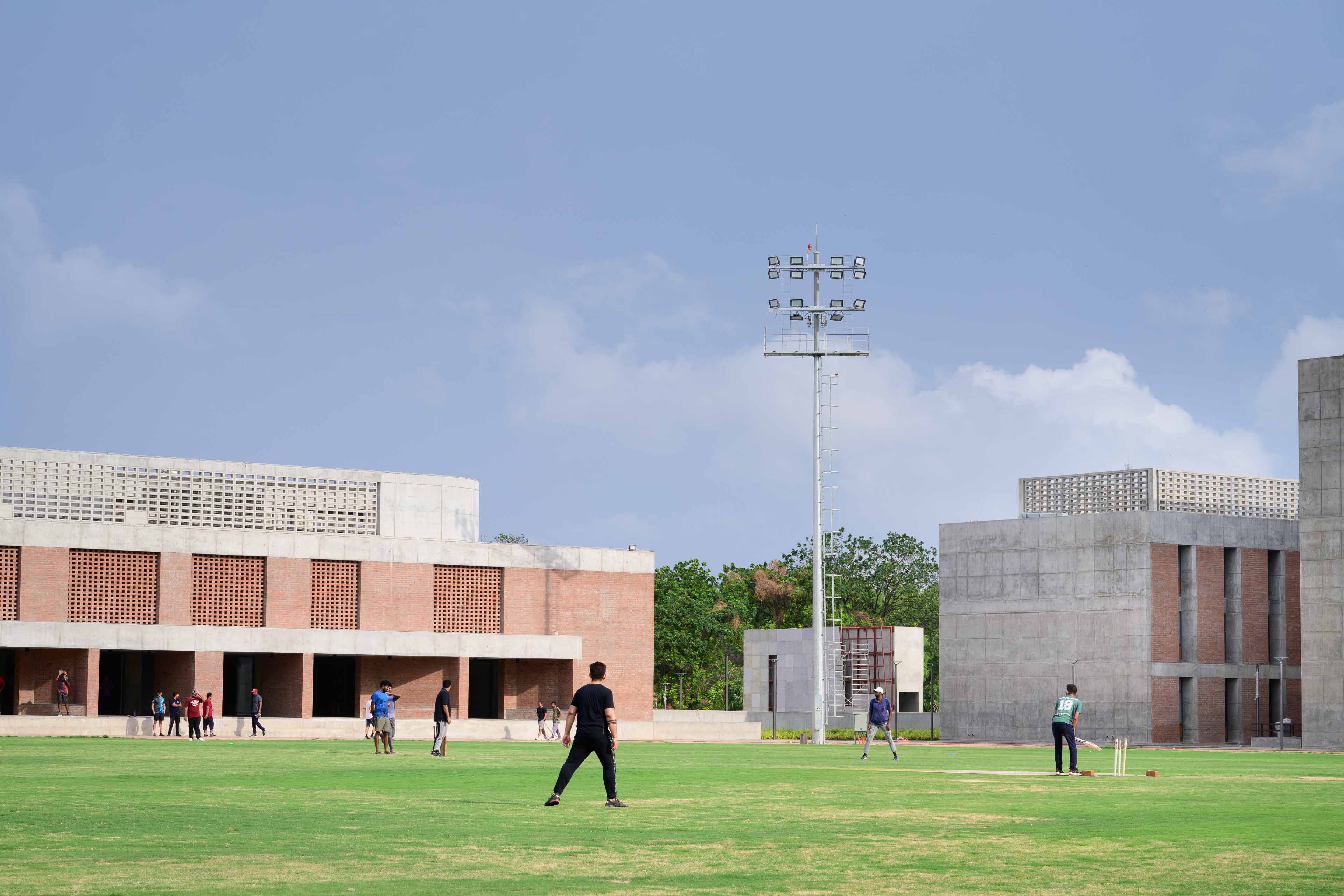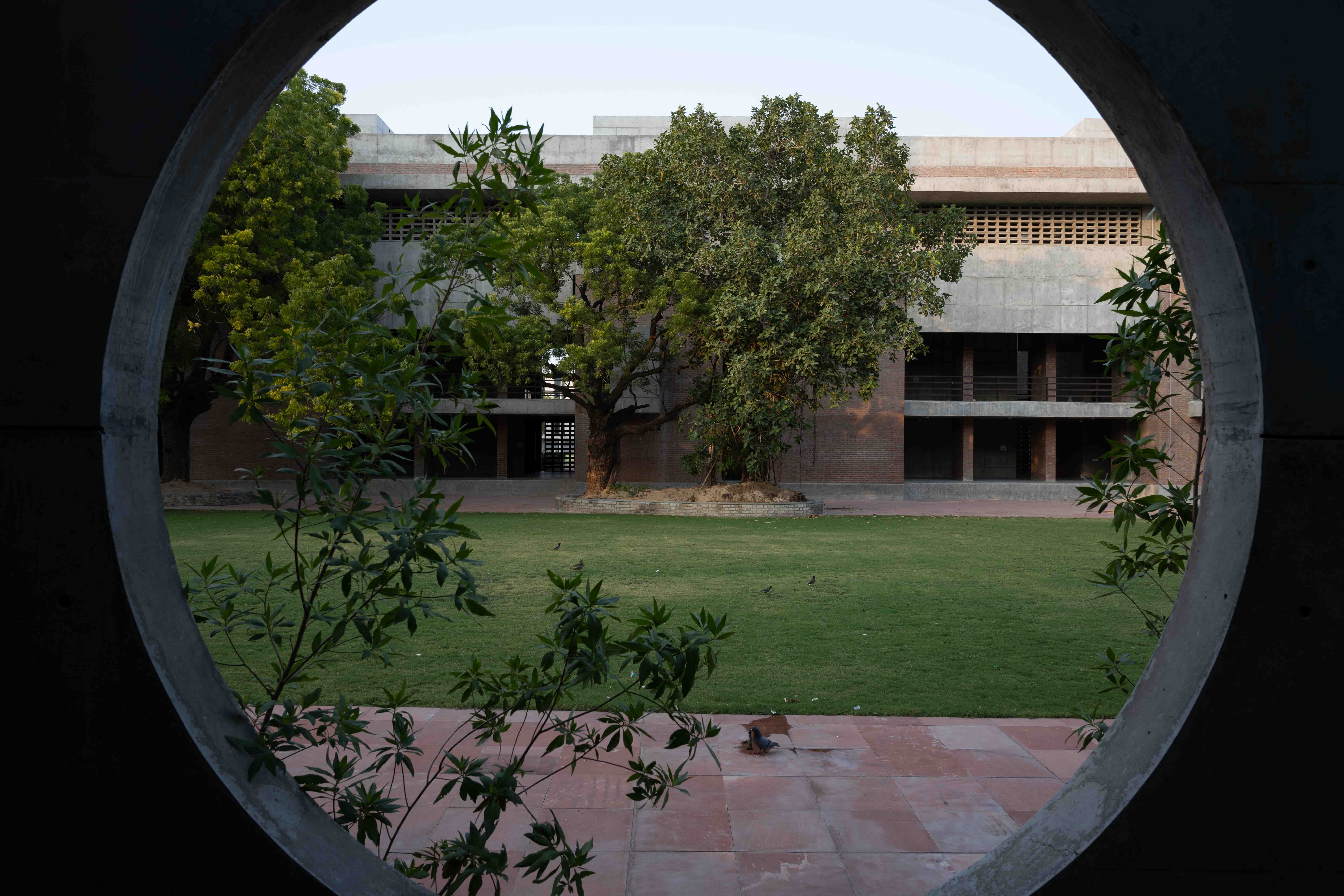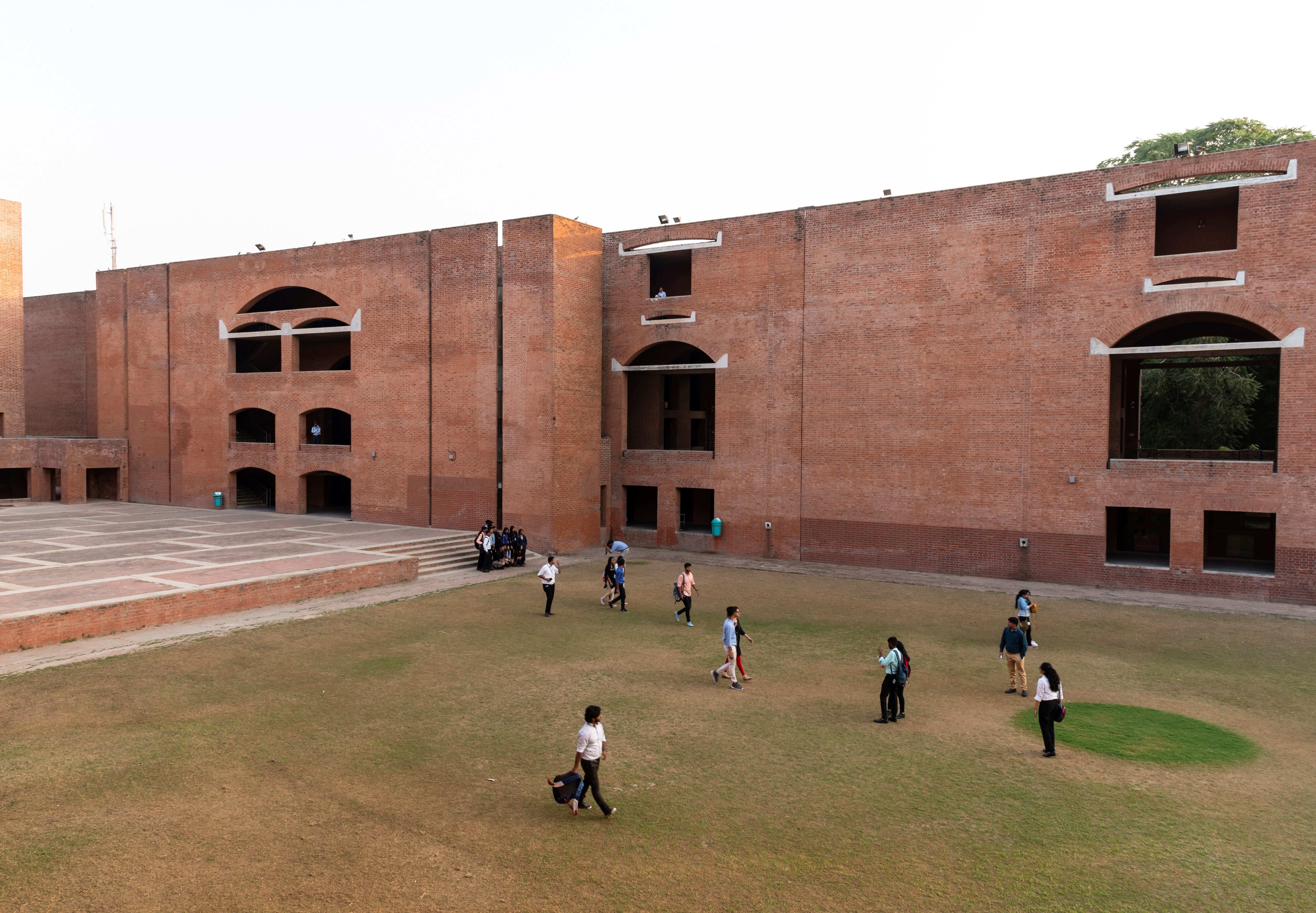Overview
The two-year full-time Post Graduate Programme in Management (PGP) is the flagship MBA programme of IIMA. It is a residential programme for graduates from different disciplines wishing to choose a career in management. Its main objective is to develop competent professional managers. The admission process consists of the nationally administered Common Admission Test (CAT) for domestic applicants, and GMAT for overseas Indian applicants or foreign nationals, followed by analytical writing test and personal interviews for shortlisted candidates. The students are selected on the basis of the applicable (CAT/GMAT) exam scores, past academic performance and performance in the analytical writing test and personal interviews. Selected students have scholastic achievements in disciplines such as arts, commerce, science and professional streams such as engineering, technology, and medicine. Many of them also have achievements in extra-curricular and organizational activities. Some of the qualities that characterize past students are high levels of initiative and energy, capacity for hard work, strong task orientation, willingness to learn, and a temperament suitable for teamwork. The PGP classes have a mix of fresh graduates and persons with work experience.
Admission Categories
Admission Process
|
Revised Calculation of Academic Rating (AR) score for 2022-24 batch admissions: In view of the fact that for the last two years due to COVID-19, many universities could not conduct exams and based on varied criteria gave pass/promotion certificates. Considering this, the CAT Committee of 2021 had allowed candidates to take CAT 2021 without requiring any minimum percentage of marks in bachelor’s degree. On account of this, the Admissions Committee of IIM Ahmedabad decided to do away with the bachelor’s degree component from the shortlisting criteria and to apply it uniformly to all the candidates. The AR now will be computed on a scale of 25 (considering class 10th marks, class 12th marks and candidate's work experience) and the points will be pro-rated to 35. The following formula will now be used for computing the Composite Score (CS): CS = 0.35* (Pro-rated AR Score/35) + 0.65* (Normalized overall CAT Score) Pro-rated AR Score= [(AR score computed by taking 0 points for Bachelor’s degree)/25] * 35 |
|
In order to ensure the criteria is not disadvantageous to anyone, the Admissions committee has broadened the list of candidates shortlisted for interviews (AWT-PI process), to include those with graduation marks, who meet the shortlisting cut offs as per the criteria. |
Admission/Selection Process for Candidates for PGP at IIMA through CAT-2021
The selection of the candidates for admission to the 2022-24 batch of the PGP at IIMA is a two-step process.
In the first step, candidates are short-listed for Analytical Writing Test (AWT) and Personal Interview (PI) from among the candidates who have a valid CAT-2021 score, who have applied to the programme and who satisfy the eligibility criteria for the programme described as below.
Important Note: Foreign nationals (foreign passport holders) staying in India must take GMAT and apply through Supernumerary Quota category only. For details, please visit the URL https://www.iima.ac.in/web/pgp/apply/supernumerary-quota
Shortlisting and Selection[1] Criteria for PGP 2022-24 batch
1. Preliminary Screening
In CAT-2021 there will be three sections, viz., ‘Quantitative Aptitude' (QA), ‘Data Interpretation & Logical Reasoning' (DILR) and ‘Verbal and Reading Comprehension' (VRC). Only the candidates above the following minimum cut-offs in the sectional percentile ranks, the overall percentile rank and obtaining a positive (greater than zero) raw score in all sections of CAT-2021 will be considered for all the subsequent stages.
Table 1: Minimum Cut-offs of CAT-2021 Percentile Ranks
|
Category |
Verbal and Reading Comprehension percentile rank (PVRC) |
Data Interpretation & Logical Reasoning percentile rank (PDILR) |
Quantitative Aptitude percentile rank (PQA) |
Overall percentile rank (PT) |
|
General, EWS |
70 |
70 |
70 |
80 |
|
NC-OBC-cum-transgender |
65 |
65 |
65 |
75 |
|
SC |
60 |
60 |
60 |
70 |
|
ST |
50 |
50 |
50 |
60 |
|
PwD (General, EWS, NC-OBC-cum-transgender, SC) |
60 |
60 |
60 |
70 |
|
PwD (ST) |
50 |
50 |
50 |
60 |
Legend: Economically Weaker Sections (EWS), Scheduled Castes (SC), Scheduled Tribes (ST), Non-creamy Other Backward Castes (NC-OBC), Persons with disabilities (PwD).
At different stages of the selection process ‘Application Rating' (AR) score of an applicant will be used. An applicant's AR score is the sum of the rating scores ‘A', ‘B', ‘C' and ‘D' (Tables 2-5) based on their percentage of marks obtained in the 10th standard, the 12th standard (depending upon the stream, viz., ‘Science', ‘Commerce' and ‘Arts & Humanities'), the bachelor's degree programme (depending upon the discipline) and work experience (as on July 31, 2021) respectively. For different streams/disciplines the equivalent ARs are arrived at by using a (sort of) percentile equivalence of the score distributions using previous year's CAT data. For details of academic disciplines, please refer to Table 8.
Table 2: Rating Scores for the 10th Std. Examination (Rating Score A)
|
Percent score in 10th Std. Exam |
Rating Score A |
|
<= 55 |
1 |
|
> 55 and <= 60 |
2 |
|
> 60 and <= 70 |
3 |
|
> 70 and <= 80 |
5 |
|
> 80 and <= 90 |
8 |
|
> 90 |
10 |
Table 3: Rating Scores for the 12th Std. Examination (Rating Score B)
|
|
|
||||||||||||||||||||||||||||||||||||||||||||||||
Table 4: Rating Scores for the Bachelor's Degree Examination (Rating Score C)
|
|
|
||||||||||||||||||||||||||||||||||||||||||||||||
|
|
|||||||||||||||||||||||||||||||||
Table 5: Rating Scores for Work Experience (Rating Score D)
|
Work Experience in Month (as filled in the CAT Application Form) |
Rating Score D |
|
< 12 months |
0 |
|
>= 12 and <= 36 months |
MF * (number of months of work experience – 11) |
|
> 36 months |
5 |
|
Work-experience Multiplication Factor (MF) = 0.20 |
|
Application Rating Score: AR= (A+B+C+D)
Normalised AR score of an applicant is equal to their AR score divided by average of the top 50 AR scores from the applicants' pool, (the applicants' pool in this case being defined as the group of candidates who appear for CAT-2021 and apply to IIMA.)
Notes about the marks obtained:
- Percentages of marks of an applicant who is yet to complete the bachelor's degree will be computed based on their available marks.
- For a candidate having cleared CA/ICWA/CS or Fellow of the Institute of Actuaries of India (FIAI) of without having a bachelor’s degree, the aggregate final percentage of marks of all the levels examinations obtained and as entered in the CAT application form would be treated as their available marks.
- For computing the AR score of an applicant, scores in all subjects that appear in their marks-sheet of 10th and 12th Std. examinations will be considered irrespective of whether the board considers them for calculating the percentage.
- For the bachelor's degree, the percentage of marks awarded by the candidate's institution/university will be treated as final. If the institution/university does not award the percentage of marks, it will be calculated on the basis of the marks obtained in all the subjects listed in the marks-sheet.
- For the bachelor's degree, if the percentage of marks awarded by the candidate's institution/university does not take into account marks obtained in all the subjects as mentioned in the marks-sheet(s) for all the years, the candidates must produce a certificate from the principal/head of the department/registrar/director of the institution/university certifying details of the practice at the institution/university at the time of the interview, if shortlisted for the same.
- If any board/institution/university awards only letter grades without providing an equivalent percentage of marks on the grade-sheet, the candidate should obtain a certificate from the board/institution/university specifying the equivalent marks which should be used for filling the online CAT application form. The original equivalence certificate needs to be submitted at the time of interview, if shortlisted for the same.
- For candidates having undergone/completed an integrated master's degree or dual degree directly after their 12th/HSC, the percentage of marks obtained as per their institute/university norms which is considered as equivalent to bachelor's degree will be considered. For those undergoing (yet to complete) an integrated master's degree or a dual degree directly after their 12th/HSC, the percentage of marks, similarly obtained, for the years/semesters completed till the date of application for CAT will be considered.
2. Shortlisting for Analytical Writing Test (AWT) & Personal Interview (PI)
Shortlisting will be carried out in two stages.
Stage 1: (From the Applicants' pool: Selection of exceptional performers across different disciplines)
IIMA endeavours to recognise exceptional performers in terms of their previous academic records as well as their performance in CAT across diverse academic backgrounds. Towards that, a certain number of top candidates from each of the academic disciplines will be shortlisted for AWT & PI on the basis of their composite score ‘CS' (see below) subject to their fulfilling certain criteria.
From each of the academic categories (AC) for which the total number of applicants to IIMA who appear for CAT-2021 from SC/ST/NC-OBC/PwD categories is at least 100, the top 5% in the respective AC limited to the respective categories (General/SC/ST/NC-OBC/PwD) among the applicants to IIMA who appear for CAT-2021, henceforth referred to as ACRC groups, (subject to upper limits on the numbers per ACRC group as specified in Table 6) will be shortlisted for AWT & PI on the basis of the composite score ‘CS' (see below) subject to their fulfilling criteria C1-C3.
|
CS (Composite Score) = ARF_CS * Normalised AR score + CATF_CS * Normalised overall score in CAT-2021 |
|
Application Rating Multiplication Factor for Composite Score (ARF_CS) = 0.35; CAT Multiplication Factor for Composite Score (CATF_CS) = 0.65 |
Table 6a: The upper limits (UL) on the number of candidates to be shortlisted per RC for AC-1, AC-2, AC-3, AC-5
|
Category |
Upper Limit (UL) Per ACRC[1] |
|
General |
100 |
|
NC-OBC-cum-transgender |
57 |
|
SC |
32 |
|
ST |
16 |
|
PwD |
6 |
Table 6b: The upper limits (UL) on the number of candidates to be shortlisted per RC for AC-4
|
Category |
Upper Limit (UL) Per ACRC[2] |
|
General |
150 |
|
NC-OBC-cum-transgender |
85 |
|
SC |
48 |
|
ST |
24 |
|
PwD |
9 |
[1] 5% or the numbers given in Table 6a, whichever are smaller.
[2] 5% or the numbers given in Table 6b, whichever are smaller.
Criteria C1-C3:
C1. PVRC, PDILR, PQA and PT must not be lower than the minimum cut-offs as specified in Table 1.
C2. P ≥ Minimum cut-offs (specific to the category and the stream as shown in Table 7), where P is the average of the percentages of marks scored in 10th and 12th std. examinations.
Table 7. Minimum cut-off for P across different disciplines and different categories
|
Stream in 12th std. |
General-cum-EWS Category |
NC-OBC-cum-transgender Category |
SC Category |
ST Category |
PWD (General, NC-OBC-cum-transgender, SC) |
PWD (ST) |
|
Science |
80 |
75 |
70 |
65 |
70 |
65 |
|
Commerce |
77 |
72 |
67 |
62 |
67 |
62 |
|
Arts & Humanities |
75 |
70 |
64 |
59 |
64 |
59 |
C3. (Percentage of marks in the bachelor's examination) ≥ Minimum cut-off percentage, to be set at the 80th percentile of the percentage of marks of the respective ACRC group of the applicants' pool, (the applicants' pool in this case being defined as the group of candidates who appear for CAT-2021, apply to IIM Ahmedabad and belong to the respective ACRC.)
Any AC, for which the total number of applicants to IIMA who appear for CAT-2021 from SC/ST/NC-OBC/PwD categories is less than 100, will not be subdivided into ACRCs as above. For such an AC, the top 100 or the top 5% in the respective AC among all the applicants to IIMA who appear for CAT-2021, whichever is less, will be shortlisted for AWT & PI on the basis of the composite score ‘CS' (see above) subject to their fulfilling criteria C4-C6.
Criteria C4-C6:
C4. PT ≥ 80, PQA ≥ 70, PDILR ≥ 70 and PVRC ≥ 70.
C5. P ≥ 80 (Science), 77 (Commerce), 75 (Arts/Humanities), where P is the average of the percentages of marks scored in the 10th and 12th std. examinations.
C6. (Percentage of marks in the bachelor's examination) ≥ Minimum cut-off percentage, to be set at the 80th percentile of the percentage of marks of the respective AC group of the applicants' pool, (the applicants' pool in this case being defined as the group of candidates who appear for CAT-2021, apply to IIM Ahmedabad and belong to the respective AC.)
Note: For AC 1, separate short-lists will be drawn, computing the Composite Score (CS) using a separate bachelor’s degree 80th percentile cut off marks (C3 & C6 criteria) of Part I & Part II respectively.
Stage 2: After removing the candidates selected in Stage 1 from each category (General, NC-OBC, SC, ST and PWD) the additional number of candidates to be shortlisted for AWT & PI will be selected on the basis of the composite score ‘CS' (see above) subject to their fulfilling criteria C1-C2.
3. Final Selection
Selection at this stage will strictly be based on the shortlisting of the candidates done separately for each category (General/SC/ST/NC-OBC/PwD) on the basis of their ‘Final Composite Score's (FCS). The numbers selected in different reservation categories will be in proportions mandated by law.
The FCS of a candidate who appears in AWT & PI will be computed as follows:
|
FCS = PIF * Normalised PI Score + AWTF * Normalised AWT Score + CATF_FCS * Normalised CAT Score + ARF_FCS * AR |
|
Personal Interview Multiplication Factor (PIF) = 0.50 AWT Multiplication Factor (AWTF) = 0.10 CAT Score Multiplication Factor for Final Composite Score (CATF_FCS) = 0.25 Application Rating Multiplication Factor for Final Composite Score (ARF_FCS) = 0.15 |
The normalised PI and AWT scores of a candidate are their scores in the respective field divided by the average of the top 1% scores in the same field respectively.
The following information is about the admission process followed by IIMA for its PGP subsequent to CAT. It is therefore, important for the candidates to read them carefully.
- Performance in CAT is an important input in the admission process. Candidates should note that it is important to perform well in each section of the test. In addition to the performance in CAT, IIMA uses academic performance of the candidates throughout their academic career up to the bachelor's level for shortlisting for AWT & PI.
- Please note that IIMA shortlists candidates for AWT & PI independent of the other IIMs. Hence it is possible to observe variations in the lists of the candidates shortlisted by different IIMs.
- Details of the candidates shortlisted will be made available on the IIMA website (www.iima.ac.in) tentatively by the second week of January 2022 after the CAT results are published. Shortlisted candidates would also be sent AWT & PI call letters by IIMA. No communication would be sent to applicants who are not shortlisted for AWT & PI.
- After the AWT & PI round, admission offers are made by IIMA to successful candidates. The final selection is based on a diverse set of attributes which includes performance in CAT, performance in AWT & PI, academic, co-curricular and extra-curricular achievements, work experience etc. All selected candidates for the IIMA 2-year PGP must be of 19 years age as on June 30, 2022.
- Disclosure of information about the admission process is driven by concerns which at times conflict with each other. IIMA would like the admission process to be transparent. At the same time, IIMA would wish to protect the privacy of the individual candidates and confidentiality of the process to prevent abuse. Based on these considerations, the details of the performance of an individual are not made available to any other person. Similarly, the details of the performance of a candidate in AWT & PI, including assessment of attributes mentioned under paragraph 4 above, is not disclosed to anyone to prevent exercise of undue pressure on the panelists participating in the admission/selection process. IIMA exercises its own discretion in disclosing weights assigned to diverse sets of attributes mentioned under paragraph 4 above. To ensure that the perceived lack of transparency does not in any way affect the candidates negatively, adequate care is taken in formation of the interview panels, development of objective criteria for assessment, random allocation of candidates to interview panels and other such measures.
- Candidates, who appear in AWT & PI will be able to view whether they have been offered admission by IIMA tentatively during the second week of April 2022 by visiting the IIMA website. Admission offer letter would be sent to all successful candidates. Candidates, who are offered admission, need to confirm their acceptance by completing all the required formalities by the first/second week of May 2022. Some candidates may also be placed on the waiting list initially during the second week of April 2022. Offers to candidates on the waiting list would depend upon the number of successful candidates accepting the offer made by IIMA.
Note:
In the event of specific guidelines being issued by the Government of India, IIMA reserves the right to, depending on the nature of the guidelines, continue with its AWT & PI as stated above OR use an alternative selection procedure which may include calling for additional information from the shortlisted candidates, a supplementary test or any other suitable process/mechanism. Care will be taken to ensure that candidates are not put to undue inconvenience.
The exact cut-offs mentioned above are computed based on the previous years' CAT data. It depends on various factors like the applicants' pool, the distribution of CAT scores etc. which may change year to year. In view of this fact the Admissions Committee of IIMA reserves the right of changing the cut-offs if deemed desirable in the light of CAT-2021 data.
Table 8. Categories for bachelor's degree/integrated master's degree (as per CAT Application)
|
AC-1 (Medicine and Surgery based subjects): Part I: MBBS, MD (USA) |
|
AC-2 (Selected Professional Degrees): Chartered Accountancy (CA), Cost and Works Accountancy (ICWA), Company Secretaryship (CS), Fellow of the Institute of Actuaries of India (FIAI) |
|
AC-3 (All Commerce, Economics, Finance and Management Related Degrees): Including BAF, BBA, BBE, BBI, BBM, BBS, BCAF, BCCA, BCOM, BFIA, BFM, BHM, BHMCT, BIBF, BMS (Bachelor of Management studies) and BSBA degrees. In particular, including
|
|
AC-4 I (All Engineering, Technology and Architecture related Areas): Including BARCH, BE, BIT, BINFTECH, BS (ENG)/ BSC (ENG), BTECH and integrated MTECH degrees (Excluding all degrees in Accessories Design/Apparel Production/Design/Fashion Communication/Fashion Design/Fashion Technology/Interior Design/Knit Wear Design/Leather Design/Jewelry Design/Footwear Design, and BS/BSC degrees in Information Technology). In particular, including
II (Science and Agriculture related Areas, other than Medicine and Surgery): Including all BS/BSC and integrated MS/MSC (excluding degrees in Economics, Fashion Design, Journalism, and Leather Design). Also including degrees in paramedical, veterinary degrees. In particular, including
|
|
AC-5 (All Arts/Humanities Related Degrees, Design, Education, Fashion Design/Technology, Law and Rural Studies): Including any BA (excluding Economics, Geography and Geological Sciences, Mathematics and Statistics), BAA, BAJM, BCJ, BDES, BED, BFTECH, BJ, BJMC, BL, BM (Bachelor of Music), BMC, BMM, BMus, BSW and LLB. In particular, including
|
|
AC-6: Any other discipline not mentioned in AC-1 to AC-5. |
Note:
- Dual bachelor's degree holders will be classified in one of the categories AC-1 to AC-6 based on their field(s) and subjects. Applicants are requested to mention both the degrees of specialization separately in Bachelor Degree 1 and Bachelor Degree 2.
- Final discretion on the academic category that an academic programme will be classified into rests with the Admissions Committee of IIMA.
- For candidates having undergone/completed an integrated master's degree directly after their HSC, their classification into an academic category will be based on their academic discipline in the integrated master's degree programme.
- For a candidate who has obtained further higher degrees after their bachelor's degree or their integrated Master's degree, other than those degrees listed in Table 8, the discipline(s) of the subsequent degrees will not be taken into consideration in deciding their classification in an academic category.
[1] IIM Ahmedabad reserves the right to make changes in the Shortlisting and Selection Criteria, if considered necessary at any point.
[2] For an AC for which the number of applicants to IIMA in that particular AC is more than 50% of the total applicants to IIMA, the 'UL per ACRC' numbers will be doubled (e.g., UL for General will be 200 instead of 100, UL for SC will be 64 instead of 32, and so on).
Salient Features of PGP Students
SALIENT FEATURE OF MBA STUDENT
| 2013-2015 BATCH | 2012-2014 BATCH | |||
|---|---|---|---|---|
| 1. EDUCATIONAL BACKGROUND | TOTAL | PERCENTAGE | TOTAL | PERCENTAGE |
| AGRICULTURE | 2 | 0.53 | 1 | 0.26 |
| ARTS | 0 | 0 | 1 | 0.26 |
| COMMERCE | 12 | 3.16 | 10 | 2.62 |
| ENGINEERING | 362 | 95.26 | 364 | 95.54 |
| SCIENCE | 4 | 1.05 | 5 | 1.31 |
| 2. WORK-EXPERIENCE | ||||
| <= 2 YEARS | 166 | 43.68 | 180 | 47.24 |
| > 2 YEARS | 104 | 27.37 | 105 | 27.56 |
| WITHOUT EXPERIENCE | 110 | 28.95 | 96 | 25.2 |
| 3. SEX | ||||
| MALE | 298 | 78.42 | 317 | 83.2 |
| FEMALE | 82 | 21.58 | 64 | 16.8 |
| 4. CATEGORY | ||||
| GENERAL | 182 | 47.89 | 184 | 48.29 |
| NON-CREAMY OBC | 99 | 26.05 | 99 | 25.98 |
| SCHEDULED CASTE | 58 | 15.26 | 58 | 15.22 |
| SCHEDULED TRIBE | 29 | 7.63 | 28 | 7.35 |
| DIFFERENTLY ABLED (DA) | 12 | 3.16 | 12 | 3.15 |
| TOTAL | 380 | 100 | 381 | 100% |
Important Links
View allCAT-2025
PGP 2026-28
- Admission Procedure for PGP 2026-28 Batch
- Admission Procedure for Overseas Indian Candidates 2026-28 Batch
- Admission Procedure for Foreign Applicants 2026-28 Batch
PGP 2025-27
For Admission details, please contact:
-
Admissions Office (PGP & PGP-FABM)
Indian Institute of Management Ahmedabad
Main Campus
Vastrapur, Ahmedabad
Gujarat 380 015
India
Phone: +91 79 7152 4630/ 4631/ 4633/ 4634
Email: admission@iima.ac.in







